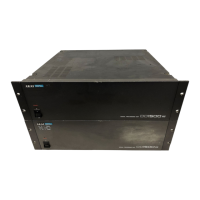UTILITIES - DIRECTORY - 21
Version 2.00 - March, 1996 Page 211
EXT M/C SYSTEM
USER KEYS MACRO
MIXER DSP
SAVE DIRECTORY
SHIFT
AUTO REHEARSE
CYCLE PRE-ROLL
EXT. TIME
GRAB TIME
GOTO
EXIT UNDO EXECUTE
COPY CUT ERASE PASTE INSERT TRIM
EDIT CUE IN OUTSYNC SELECT CUE
CURSOR
JOG
SPOOL
NUDGE DATA ENTRY/NUDGE
ENABLE
LEVEL
PAN LINE OUT
HEADPHONE
LEVEL
OUT A
OUT B
SET
SET
SET
SET
SET
SET SET
SHOW
MACRO REC
OFFSET
REVERSE
> CUT DISCARD IN > NOW
REDO
STORE
JOG/SPOOL
ZOOM OUT ZOOM IN
TRACK ZOOM
F1 F2 F3 F4 F5 F6
L R MIN MAX
MI MAX
UTILITIES EDITAUTOLOCATOR NUMERIC ENTRY
PLAYSHEET
+12dB
0dB
PLAY
123
456
789
0
CLR
-/< +/>
00
FRO
LAST TO
OVER
IN
OUT
FROM
REC
LOAD
In the RECORDING section, we saw how we can record audio into a project and have it
automatically placed into a library. In the EDITING section, we looked at the DIRECTORY
key and LIBRARIES very briefly and we saw how we can create libraries and copy, cut or
erase edits from a project into a library and paste or insert from libraries. In this section, we
will delve a little deeper into the use of libraries.
Libraries are the key to organising audio on the DD1500. Much like you organise your
work into folders in a Windows™ computer (or directories in DOS), so audio can be
organised in libraries on the DD1500 making file handling that much easier.
For example, as you start building up recordings and editing them in projects, you can
start copying off good bits of audio as clips to libraries, thus building up a central library of
sound effects, music cues, foley, atmos’s, etc., and these can be organised by type in
libraries (i.e. ANIMALS, AUTOS, BIRDSONG, CARS, DOGS, FARMYARD, MUSIC,
TRAFFIC, etc.). Each library may hold up to 256 clips
4
but, if this isn’t enough, it’s is very
easy to create a new library with just a few key presses and add more clips to the new
library.
4 Actually, this depends on whether the clips are mono or stereo. The figure of 256 relates to
mono cues. You could have around 200 stereo cues, less if you start adding multi-track
cues to a library.

